ice and Teams - Better Together
by Chris Bardon | Published On October 23, 2019 | Last Updated February 18, 2020
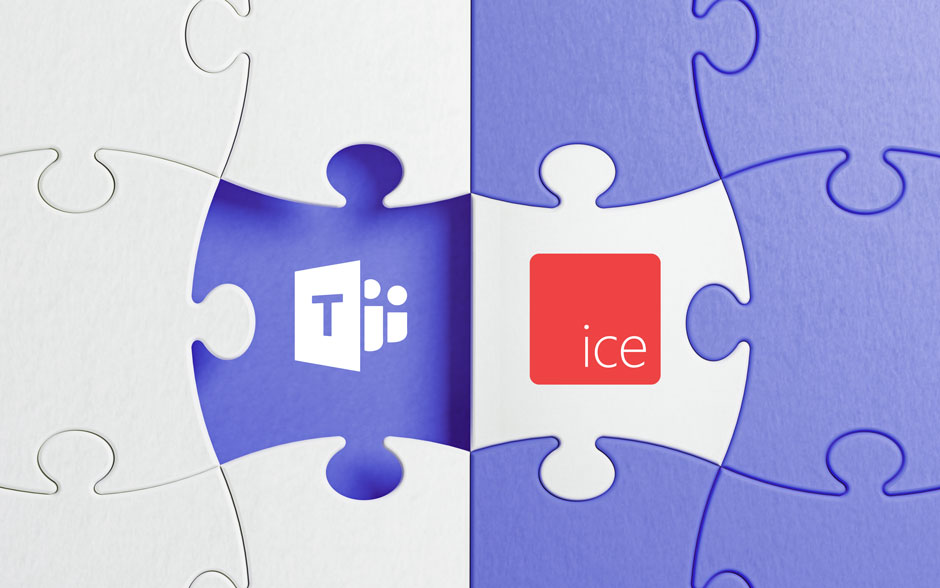
The ice Contact Center already has full support for Microsoft Teams. Using the Teams client in conjunction with iceBar not only gives agents advanced call controls, but also screen pop and application integrations, visibility into the state of queues, and specialized and granular state controls that go beyond what Teams offers natively. This made for a great first step, but for organizations that are all in on Teams, we wanted to make the integration tighter and enhance the agent and supervisor experience.
The goal was to be able to provide the same features we had in our existing integration, but without needing to deploy extra software to agent and supervisor desktops. We also wanted to improve the contact center integration into the regular collaboration flow of our customers’ Teams.
The New iceBar: ice for Teams
ice for Teams surfaces most of the controls an agent would have through iceBar, as well as contextual information about interactions, directly in Teams.
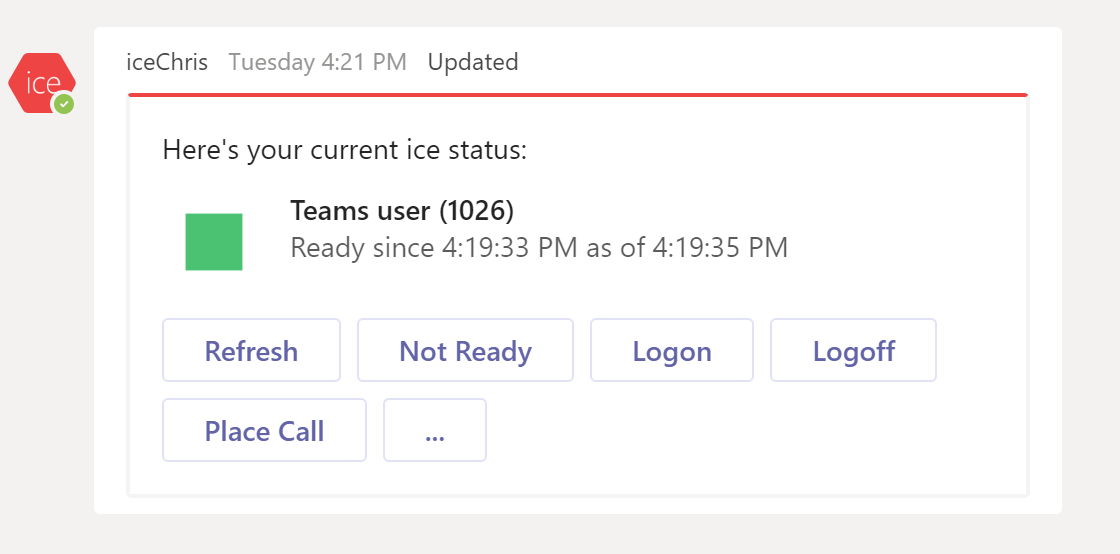
Using an updatable and persistent anchor, agents can easily see and change their current ACD state, log in and out of queues, and place tracked, recorded calls through ice:
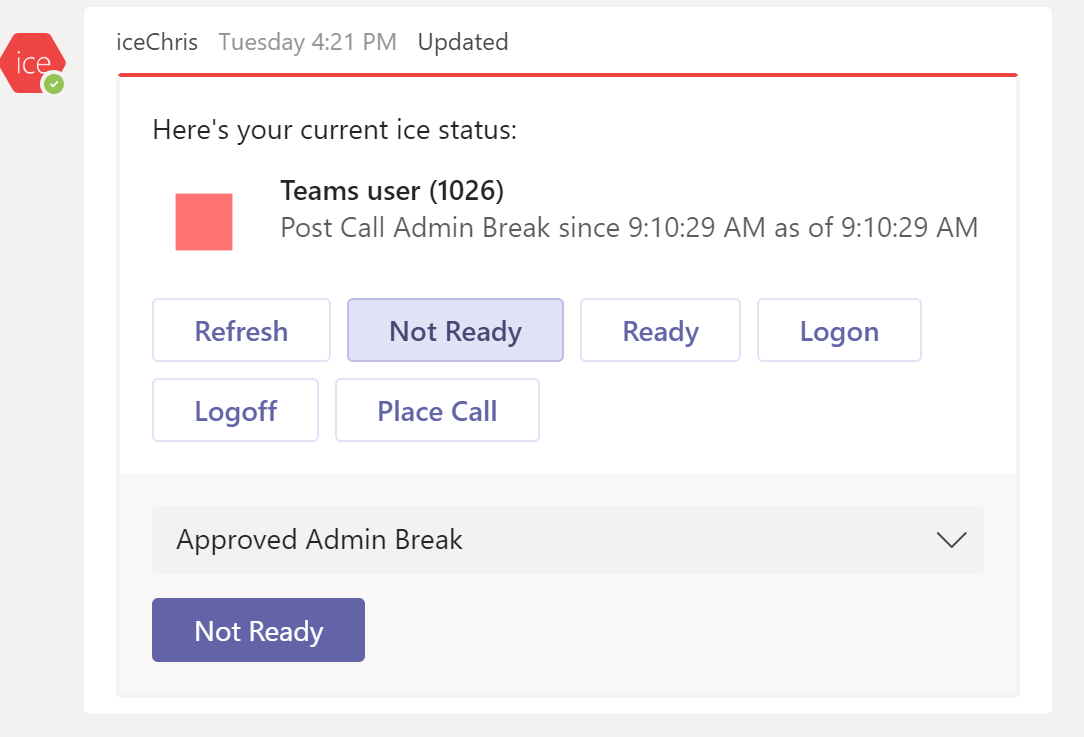
The state card is updated in real time and is presented in a 1:1 messaging session with the bot. In addition to states, agents are also presented with contextual anchors for each contact they handle:

The top section of this anchor contains information about the contact, including its state, originator, destination, queue, and configurable user data. This expands on the basic caller ID that a user sees on an incoming Teams call and lets the agent know more about the contact before they answer. The card also surfaces the previous four contacts from the same user, including calls, emails, or chat conversations, which include channels such as SMS, web chat, Facebook Messenger, as well as Teams chat.
The next section of the card shows CRM information, in this case from Dynamics, to pop immediate context to the agent. This section of the contact card is customizable using our application integration API, which is a simple REST call. It allows customers to populate contact cards with custom data from whichever system of record they have. Finally, agents have controls at the bottom of the card to transfer, consult, conference, or record a contact.
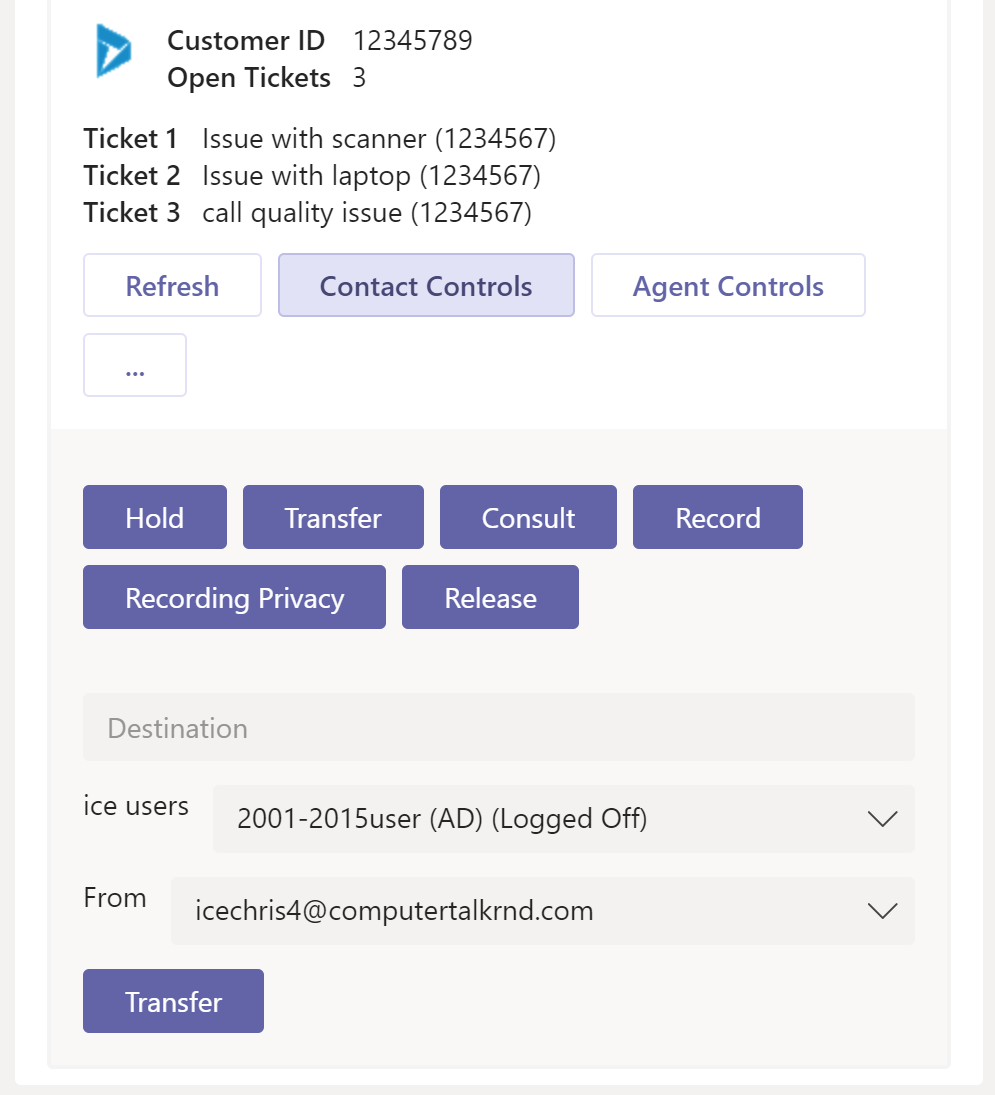
Agents can also carry out advanced operations such as Recording Privacy, which removes sensitive information from call recordings, and specifying the From address on voice calls so that outbound calls can be placed from local numbers configured with the contact center. The same rich features are available for IM contacts, which add the ability to deep link to the chat in the agent’s chat history.
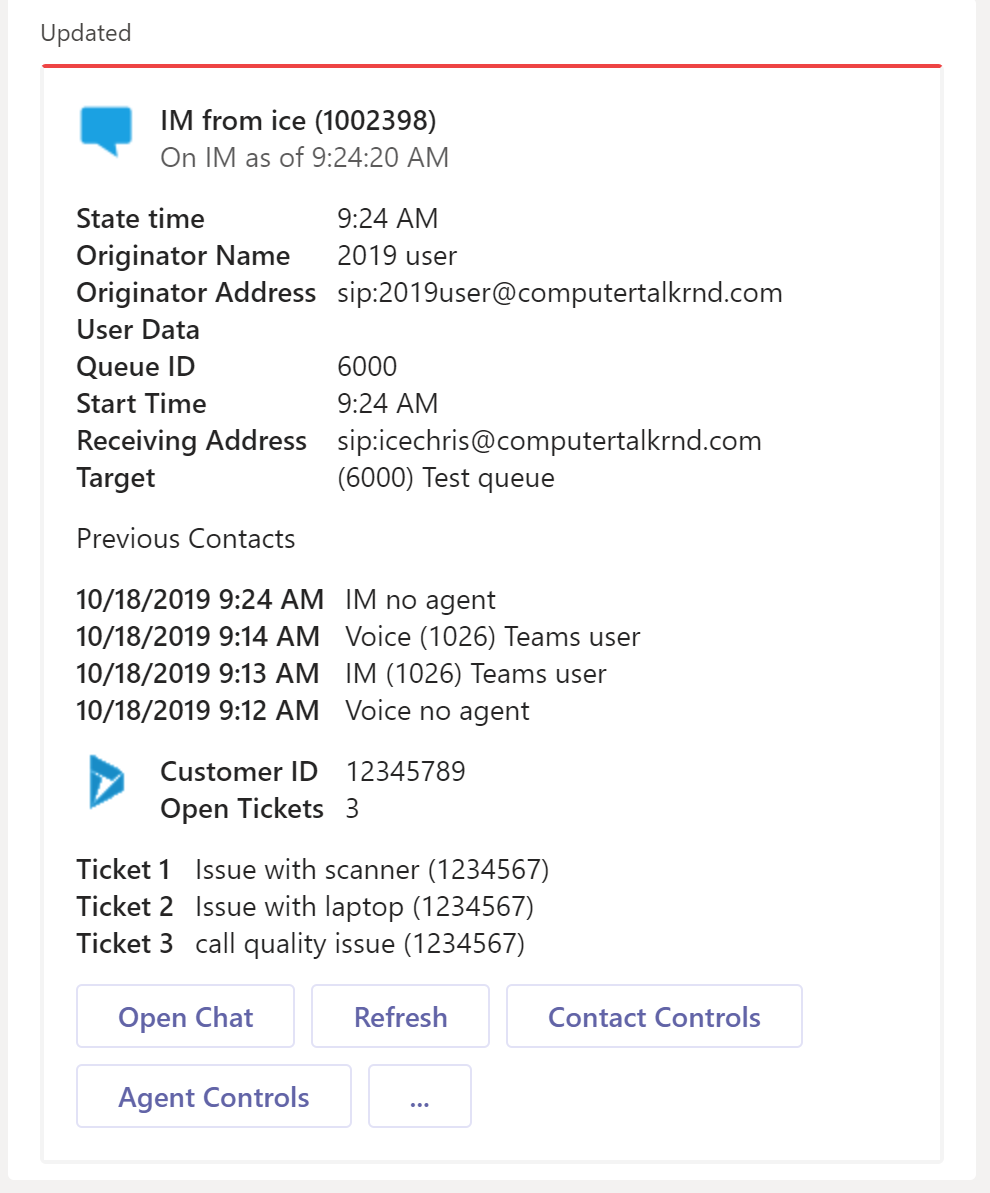
For Email contacts, ice for Teams adds the ability to reply directly in the Teams client, in addition to using the agent’s desktop or mobile email application.
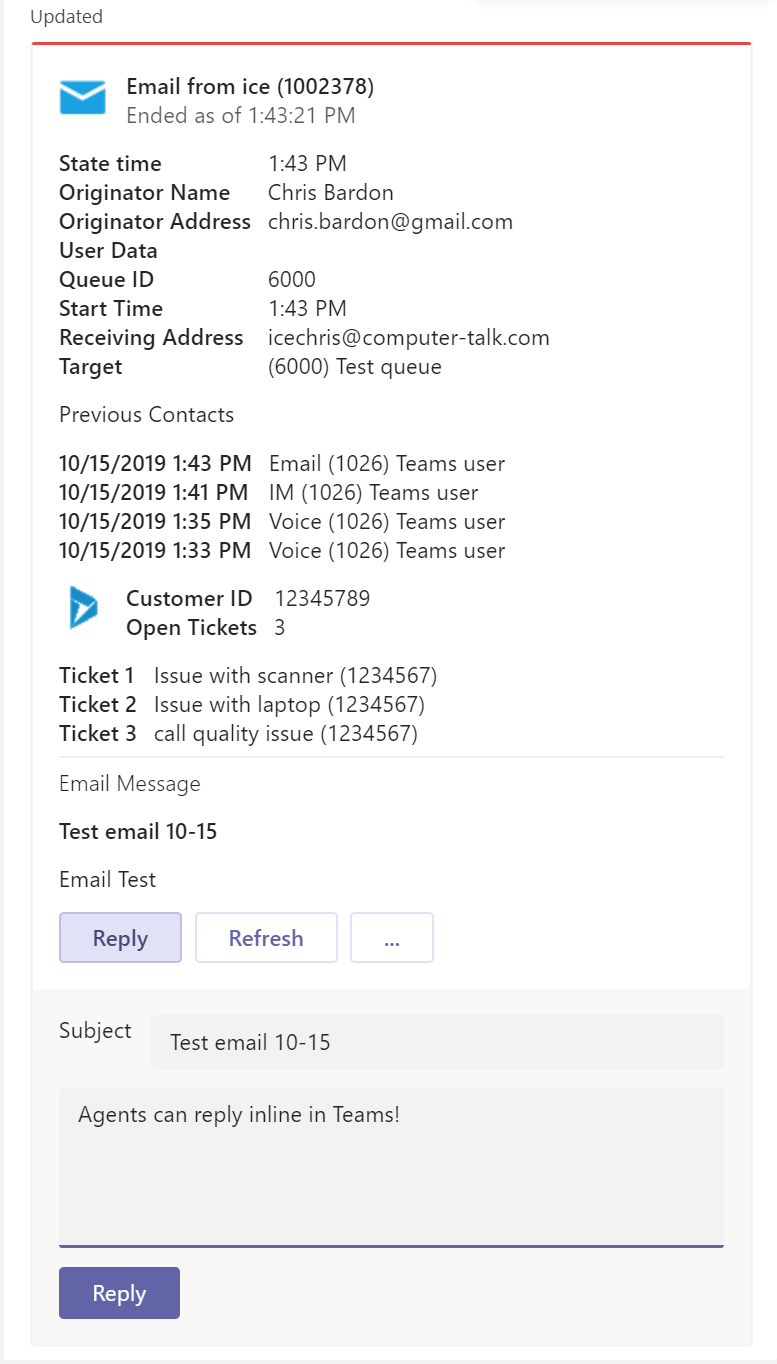
These new capabilities are all accessed by users through a Line of Business app that can be deployed using standard Teams application policies and pinned in the Teams client including the web and mobile apps.

Context and Persistence
In addition to giving users contextual anchors for contacts, contact cards from ice can also be persisted to a Teams channel.
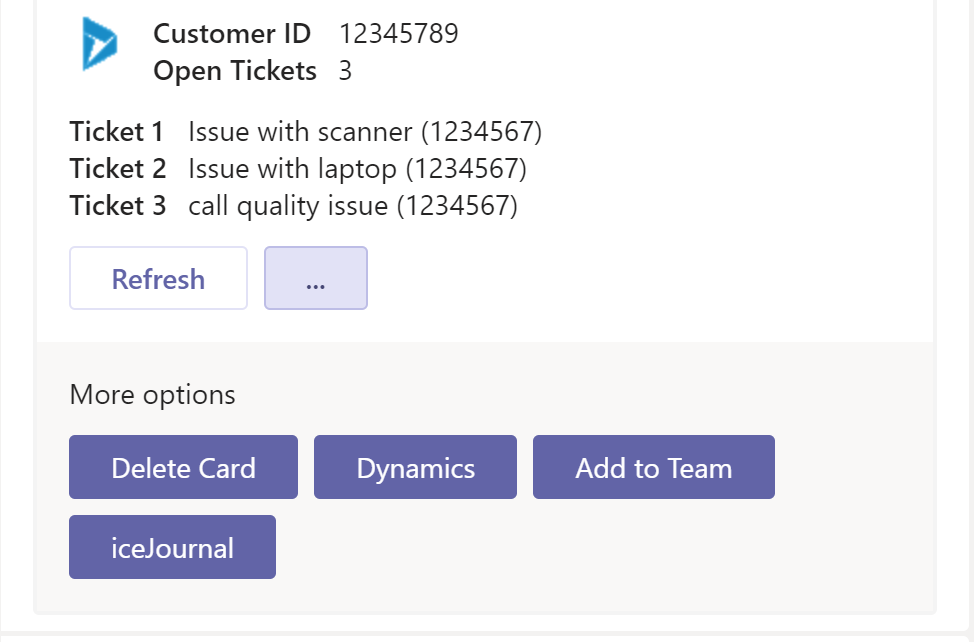
This allows a copy of the contact record, with all the contextual information, to be persisted to a channel for a follow up conversation by a larger Team.

Users can also initiate new contacts through a contextual message action that will parse phone numbers, email addresses, and IM addresses out of a message.
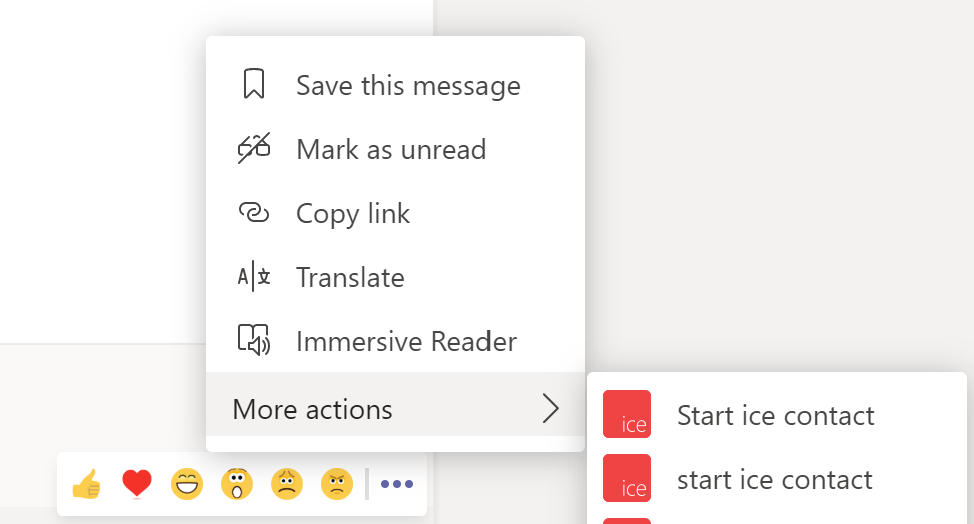
This action creates a new contact in ice that can be tracked and recorded, as well as linked to a previous contact as a follow up.
Intelligence and monitoring
iceMonitor allows users to set up a rich set of conditions that will alert of various conditions in the contact center. These alerts can be configured to notify a channel directly in Teams.

The conditions for the alert, markup for the card, and card actions are all configurable in the iceMonitor UI, so supervisors can configure alerts that are relevant to their Teams. These alerts may also be relevant to specific agents, or groups of agents, so ice can direct actionable messages to individual agents through a REST API that ice for Teams exposes. For example, this message could be sent to not ready agents if there are contacts waiting with no available agent.

Clicking the ‘Ready’ button on the message makes the agent available and routes the contact to them.
Combining this API with something more advanced, like Natural Language Understanding (LUIS) and Speech to Text from Microsoft Cognitive Services plus ice’s Active Workflow feature (which lets applications listen to active calls), allows for actionable messages like this one.

This could be based on something the caller said during a call, but in addition to identifying to the agent that this might be an account in distress, it also indicates an action that the agent might want to take (transfer the call to Retention) and surfaces the control to do so in one click.
A continuing journey
ice for Teams embeds ice much more deeply into a Teams workflow, but this is still only the beginning. As the capabilities of the Teams APIs grow, we plan on growing with them, offering additional and improved ways to make using ice with Teams a seamless experience.
Want to know more? Request a demo with our team and we’d be glad to walk through these features and more in greater detail.
More from our blog
 AI chatbots have become a major part of our daily lives. Learn more about these modern, AI-powered virtual agents.
AI chatbots have become a major part of our daily lives. Learn more about these modern, AI-powered virtual agents.
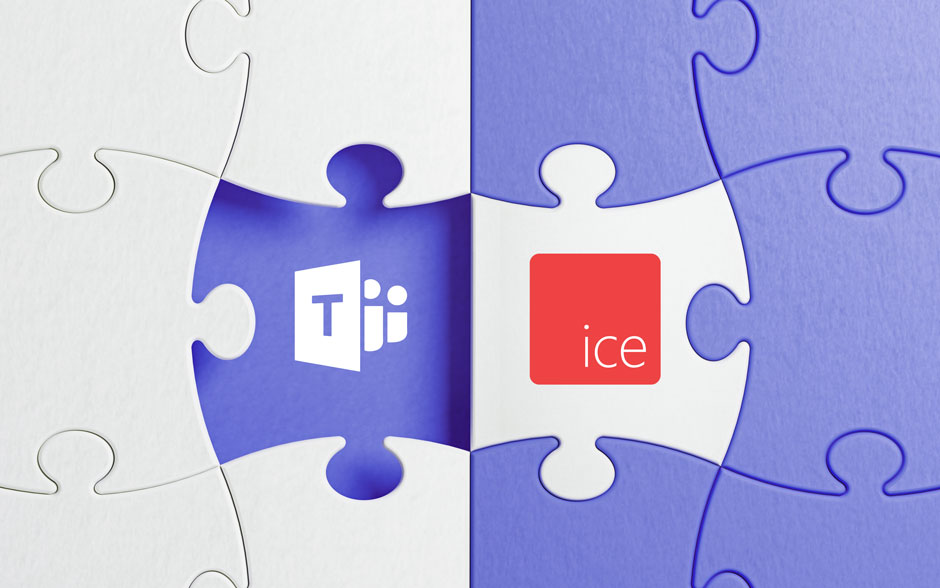 As the developer of the Teams native ice Contact Center, ComputerTalk is currently one of the first companies to go through Microsoft’s Connected Contact Center for Microsoft Teams Certification Program. Among other benefits, this certification will mean that ice Contact...
As the developer of the Teams native ice Contact Center, ComputerTalk is currently one of the first companies to go through Microsoft’s Connected Contact Center for Microsoft Teams Certification Program. Among other benefits, this certification will mean that ice Contact...
 In the healthcare space, contact centers are crucial to bridging the gap between service providers and patients seeking support, information, or guidance.
In the healthcare space, contact centers are crucial to bridging the gap between service providers and patients seeking support, information, or guidance.

